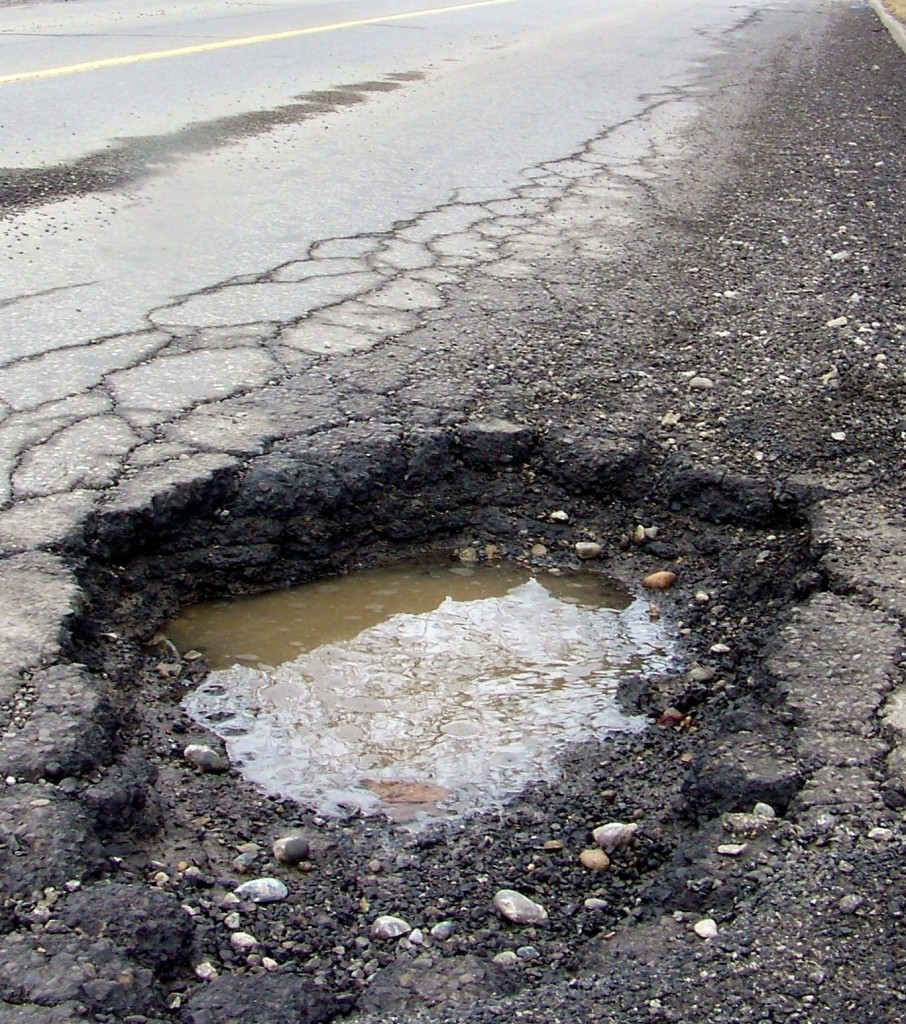 With rising temperatures in the forecast, I just received a notice from PennDOT that they have scheduled pothole patching on state roads in the 5-county Philadelphia area for tomorrow! (See PennDOT press release below).
With rising temperatures in the forecast, I just received a notice from PennDOT that they have scheduled pothole patching on state roads in the 5-county Philadelphia area for tomorrow! (See PennDOT press release below).
This week I was driving to King of Prussia on Rt. 202 North and could not believe the damage the winter weather has caused on the highway. I was in the right lane of Rt. 202 by the Rt. 422 exit, and there were large gaping holes in the roadway. I don’t know what type of filler they use in the seams but that materials was missing and it was very dangerous — you run the risk of hitting other cars in an attempt to avoid the holes. And then the damage to your car if you do hit the pothole!
It is almost impossible to drive along Lancaster Avenue and avoid the potholes, they are everywhere! Weaving in and of lanes to avoid the potholes, I think to myself — will the police understand my explanation if I get pulled over. I know that someone commented on CM, that although Rt. 30 is a state road, the repair work is done by the local municipal workers rather than PennDOT. We live on a state road and the repairs to the road have always been done by PennDOT so not certain why Lancaster Avenue would be treated any differently.
State Rep Warren Kampf has created a ‘Pothole Hotline’ for residents to report potholes on state roads. Residents in Kampf’s District are asked to call 610.251.2876 and report any potholes that are believed to be dangerous. Kampf has promised to pass the information on to PennDOT and to follow-up to make certain that the repair is done.
03/7/2014 – King of Prussia, PA.
With no snow in the forecast, the Pennsylvania Department of Transportation will once again take advantage of seasonable temperatures on Saturday (March 8) to repair potholes on state highways in the five-county Philadelphia region.
“We will have 27 crews working tomorrow to fill potholes with hot asphalt as we continue our aggressive plan to improve state roads that have been damaged during this relentless winter season,” PennDOT District Executive Lester C. Toaso said.
“PennDOT crews have been focused on filling potholes throughout the winter, except when snow duty called,” Toaso added. “The difference now is that hot asphalt is more readily available in the Philadelphia region and the use of this material enables us to make more permanent repairs.”
PennDOT crews work weekdays to repair potholes, but they also patched state roadways in the Philadelphia region on the weekend of Feb. 22-23, using nearly 600 tons of asphalt to fill holes in the pavement.
This year’s severe and early outbreak of potholes resulted from snow and ice seeping into pavements and temperature swings above and below the freezing mark.
A pothole develops when water penetrates into a roadway through pavement cracks and then freezes and expands, knocking loose small pieces of pavement. As cars and trucks ride over the area, cracks enlarge, more water enters and the cycle repeats itself to the point where the pavement fails.
Citizens can report potholes on state highways by calling 1-800-FIX-ROAD (1-800-349-7623).
Motorists can check conditions on major roadways by visiting www.511PA.com. 511PA, which is free and available 24 hours a day, provides traffic delay warnings, weather forecasts, traffic speed information and access to more than 680 traffic cameras. 511PA is also available by calling 5-1-1, and regional Twitter alerts are available on the 511PA website.